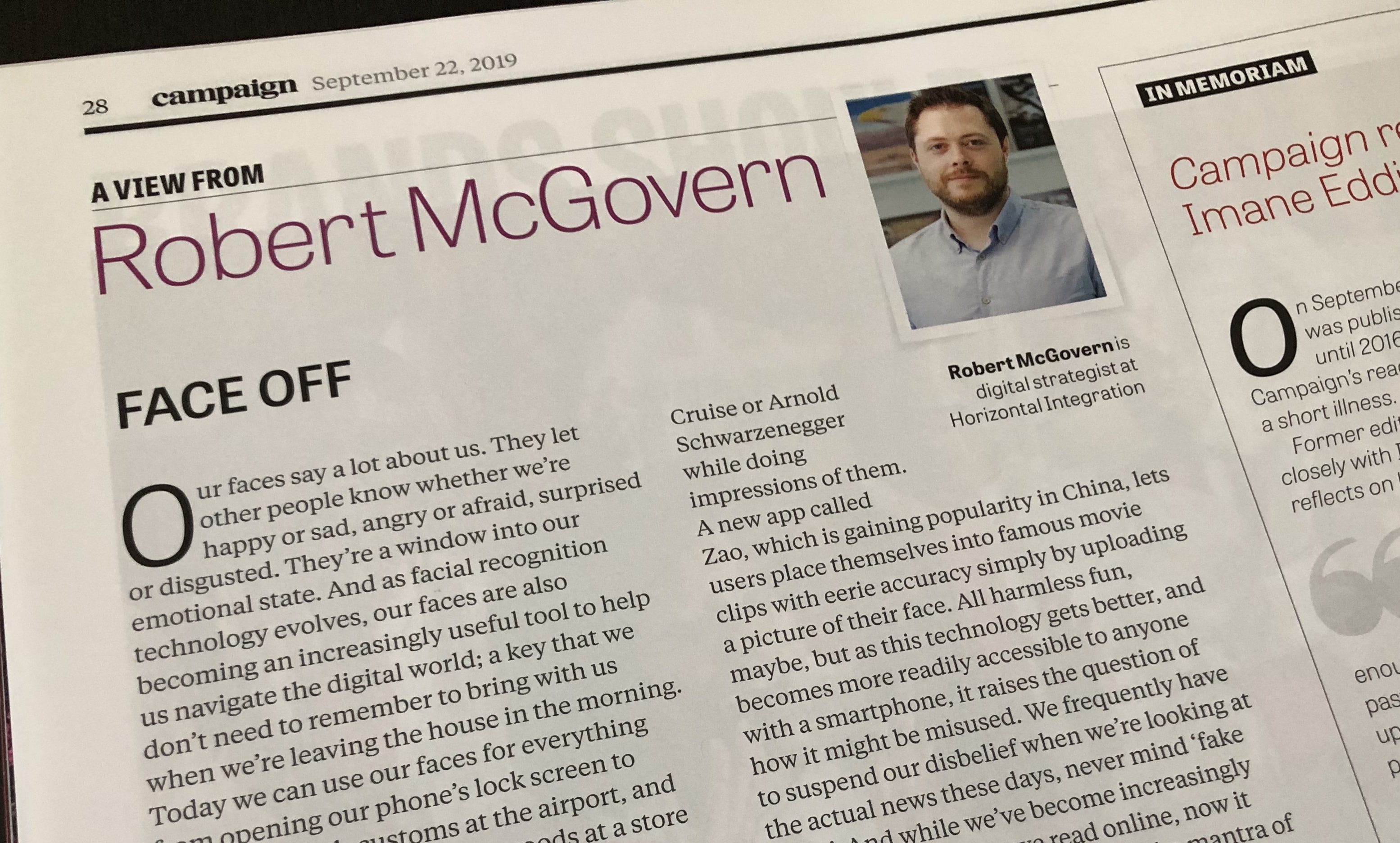Originally written for the September 22nd 2019 issue of Campaign Middle East magazine
Our faces say a lot about us. They let other people know whether we’re happy or sad, angry or afraid, surprised or disgusted. They’re a window into our emotional state. And as facial recognition technology evolves, our faces are also becoming an increasingly useful tool to help us navigate the digital world; a key that we don’t need to remember to bring with us when we’re leaving the house in the morning. Today we can use our faces for everything from opening our phone’s lock screen to getting through customs at the airport, and in some countries to pay for goods at a store checkout or access the subway. At the same time, people seem increasingly obsessed with facial augmentation apps like Face App and filters on Snapchat, experimenting to see what they’d look like as an elderly person, as a baby, or even as the opposite sex.
More concerning perhaps is the rise of facial augmentation technology that lets people manipulate the faces in videos. You’ve probably already seen some of these ‘Deep Fake’ videos online; David Beckham seemingly speaking nine different languages fluently in a video for a Malaria charity, or comedian Bill Hader seamlessly warping into Tom Cruise or Arnold Schwarzenegger while doing impressions of them. A new app called Zao that’s gaining popularity in China lets users place themselves into famous movie clips with eerie accuracy simply by uploading a picture of their face. All harmless fun maybe, but as this technology gets better, and becomes more readily accessible to anyone with a smartphone, it raises the question of how it might be misused. We frequently have to suspend our disbelief when we’re looking at the actual news these days, whatever about ‘Fake News’, and while we’ve become increasingly sceptical about what we read online, now it seems that we can’t even rely on the mantra of ‘seeing is believing’.
From a marketing point of view, some make-up brands have achieved success with facial augmentation, launching AR lenses that let consumers virtually ‘try on’ make-up to name but one example. And when it comes to Deep Fake-style technology, maybe there’s potential for some novel marketing concepts too, like letting users place themselves and their friends into a video advertisement. No doubt we’re not that far away from some big brand nailing this concept and hoovering up a bunch of industry awards. But this novelty will quickly wear off, and marketers must be careful about not going too far by slotting users into ads without their permission, especially considering the heightened concerns around privacy and creepy targeting tactics these days. I can’t think of much worse than scrolling through my social feed and seeing my own face looking back at me from every ad.


